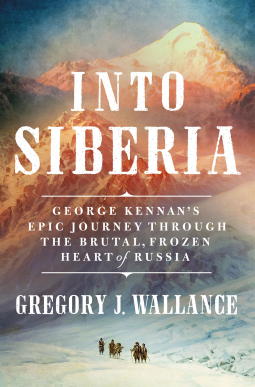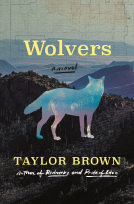
Into Siberia
George Kennan's Epic Journey Through the Brutal, Frozen Heart of Russia
by Gregory J. Wallance
This title was previously available on NetGalley and is now archived.
Send NetGalley books directly to your Kindle or Kindle app
1
To read on a Kindle or Kindle app, please add kindle@netgalley.com as an approved email address to receive files in your Amazon account. Click here for step-by-step instructions.
2
Also find your Kindle email address within your Amazon account, and enter it here.
Pub Date Dec 05 2023 | Archive Date Dec 19 2023
Talking about this book? Use #IntoSiberiaBook #NetGalley. More hashtag tips!
Description
"In Wallance’s bracing narrative, Kennan emerges as a cheerful, deeply decent companion, an uncompromising observer whose greatest strength was his ability to change his mind. He’s a welcome change from the callous imperialists who people most Victorian travelogues, and his humanity allows Into Siberia to delve into horror without succumbing to despair." — The New York Times Book Review
In a book that ranks with the greatest adventure stories, Gregory Wallance’s Into Siberia is a thrilling work of history about one man’s harrowing journey and the light it shone on some of history’s most heinous human rights abuses.
In the late nineteenth century, close diplomatic relations existed between the United States and Russia. All that changed when George Kennan went to Siberia in 1885 to investigate the exile system and his eyes were opened to the brutality Russia was wielding to suppress dissent.
Over ten months Kennan traveled eight thousand miles, mostly in horse-drawn carriages, sleighs or on horseback. He endured suffocating sandstorms in the summer and blizzards in the winter. His interviews with convicts and political exiles revealed how Russia ran on the fuel of inflicted pain and fear. Prisoners in the mines were chained day and night to their wheelbarrows as punishment. Babies in exile parties froze to death in their mothers’ arms. Kennan came to call the exiles’ experience in Siberia a “perfect hell of misery.”
After returning to the United States, Kennan set out to generate public outrage over the plight of the exiles, writing the renowned Siberia and the Exile System. He then went on a nine-year lecture tour to describe the suffering of the Siberian exiles, intensifying the newly emerging diplomatic conflicts between the two countries which last to this day.
Available Editions
| EDITION | Other Format |
| ISBN | 9781250280053 |
| PRICE | $30.00 (USD) |
| PAGES | 304 |


















